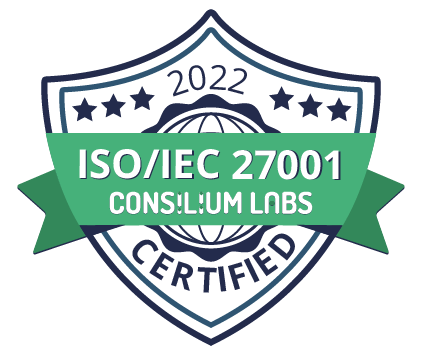For modern-day organizations, the pace of ideation is faster than ever before. Regardless of industry and size, teams across the globe are working to figure out how to make decisions faster without sacrificing the quality of those decisions. And while many organizations have no problem generating new ideas and brainstorming ways to bring them to life, many plans never actually end up seeing the light of day.

In a study conducted by McKinsey, it was reported that only 20% of global respondents felt their organizations excelled at decision making. On top of that, a majority stated that much of the time they were devoting to decision-making was being used ineffectively. Interestingly enough, the survey also found no correlation between fast decision-making and lower quality outputs. So what does this all mean? For starters, your teams shouldn’t view time-to-decision and quality decision making as a one-or-the-other situation.
In reality, you can have the best of both worlds as long as you’re navigating the decision-making process with the right knowledge and tools at the ready. The question shouldn’t be concerned with how to make decisions faster, but rather how to make the decision-making process better.
Get Started on the Right Foot
All industries are not created equal, meaning the decision-making process for your organization will look entirely different at another organization. Therefore, before the ball can truly start rolling, it’s imperative that your team takes the time that is needed to understand the space you’re operating in and outline the steps you’ll have to take to meet desired goals.
Identifying the right stakeholders from the get-go will also help keep things running smoothly during the decision-making process. When a decision is pushed through by one or a handful of people, the process will inevitably be dragged out since additional stakeholders will have to retroactively provide their input. Instead, make sure everyone that will be affected by the decision is able to speak their mind and voice their opinions from the onset.
Aligning your teams and stakeholders early on will ensure everyone is on the same page when it comes to the guidelines, desired outcomes, and potential challenges of the decision-making process.
Accommodate Your Remote Workers
In the wake of COVID-19, organizations are increasingly shifting from a fully in-person office setting to either a remote or hybrid work environment. Without the proper tools in place, not having everyone in the same room, let alone the same time zone, can throw a wrench into the decision-making process. In order to ensure collaboration and inclusivity are assured, it’s imperative that you rethink what decision-making meetings look like.
Instead of relying solely on real-time meetings that require 100% participation from in-person and remote employees alike, consider adopting an anytime approach to your meeting schedule. Anytime meetings accommodate the various schedules of your staff, and allow them to add their input, voice their concerns, or raise a question on their own time. This will keep the decision-making process moving forward with fewer impediments along the way.
Seeing as 80% of people hope they can continue to work remotely even after herd immunity has been reached, it’s not a matter of if, but when your organization decides to ensure remote workers are able to impact the decision-making process just as much as in-person employees.
Centralize Communications
Being able to defend and justify your final decision is made a lot harder when you don’t have documentation to back it up. This is often the case when organizations rely on spreadsheets and an assortment of physical documents to log their communications as opposed to utilizing a centralized solution.
When you’re structuring the decision-making process, capturing and documenting the varying opinions of different stakeholders will allow you to have a better sense of where your team stands as a whole. Thorough, centralized, documentation enables parallelized comparisons of every aspect of the decision, and allows you to consider all the alternatives and counterpoints in a way that is quick and efficient.
For peace of mind, take the time to ensure all internal communications and documentation are being logged and stored in a centralized system that can be referenced when defending the decision to senior leadership. Inevitably, you’ll thank yourself for keeping everyones’ thoughts and opinions organized and easily accessible throughout the decision making process.
Have the Right Tools at Your Disposal
It’s true that having a skilled facilitator lead your decision-making process can help you learn how to make decisions faster. It’s also true that ensuring alignment and collaboration from start to finish will keep things running smoothly. Thankfully, in today’s world, there are innovative tools that streamline the decision-making process and reduce the manual work on your end is what truly elevates your ability to make strong decisions quickly.
Implementing decision-making software can help facilitate processes around making better decisions, and enable your team to spend more time ideating and brainstorming and less time worrying about the tedious aspects of the initiative. You can also call on experienced decision-making experts to partner with your organization and lend their valuable expertise and insights.
Expert Choice, for example, delivers collaborative team tools and proven mathematical techniques to enable teams to obtain the best decision in reaching a goal. As a proven decision-making partner, they enable organizations to centralize internal documentation, synthesize information, expertise, and judgments, as well as accurately measure the importance of competing objectives and alternatives.
Achieve Speed & Quality with Every Decision
The same McKinsey study reported that people spend 37% of their time making decisions, but felt that over 50% of that time wasn’t being used effectively. For organizations, this level of inefficiency could translate to more than 530,000 days of lost working time and roughly $250 million of wasted labor costs per year. Needless to say, strengthening your decision-making processes should be a top priority for your teams.
Knowing how to make decisions faster starts with understanding that forcing speed isn’t the solution. Once you take the time to improve and prioritize your methodologies and guidelines surrounding the process, the time-to-decision will naturally improve as well.











